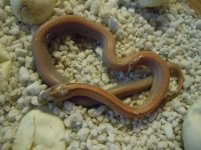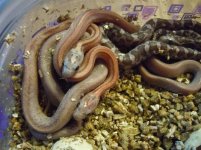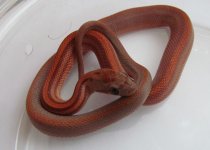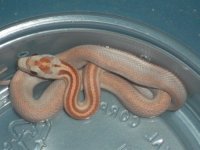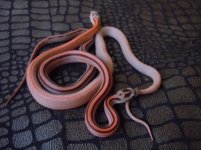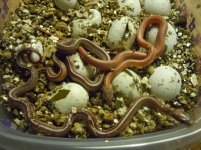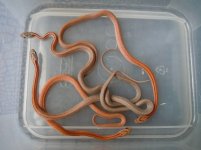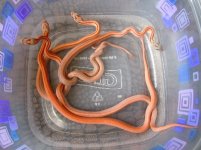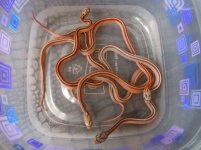Sorry to come rather late to the discussion, but . . .
I'm 99.9% certain they're tessera stripes. Rich Hume and I did a loan with my "striped" tessera female two years ago that ended up proving she was actually a striped/motley tessera. Bred to Rich's striped pied blood, she produced motleys, stripey tesseras that looked like her, and stripes of two sorts: normal-looking stripes and also the vanishing-stripe sort, which all had little or no lateral striping (and often very little dorsal striping, either) and very faded head patterns vis-a-vis normal stripes.
Since then I have worked with two other clutches involving tessera and stripe, and produced the same two "types" of stripes, in proportions consistent with Mendelian inheritance. Joe Pierce (before he vanished again) was also producing the same things in his tessera stripe clutches, and posted about them on the Source.
The confusion stems, I think, from the fact that what were originally called "striped" tesseras were in fact motley tesseras, or motley/stripe tesseras. True striped tesseras from those clutches were (I'm guessing) sold off as mere stripes.
Your results make me that much more sure.

A few more weeks should either prove it or make me look like an ass, since this year I bred one of the suspected striped tessera males from the clutch with Rich to a normally-patterned female, in the hope of seeing some tesseras pop out. Fingers crossed.
Here are some pics comparing the "normal" stripe pheno with the suspected tessera stripes from two different clutches.
From Motley/Stripe Tessera x Striped Pied Bloodred:
normal stripe (sorry it's not a very clear photo, but you can see the bolder head pattern and that the lateral and dorsal striping that extend all the way to the vent)
suspected tessera stripe (the male I am testing this year)
From Motley/Stripe Tessera x Miami het Stripe
normal stripe
suspected tessera stripe
